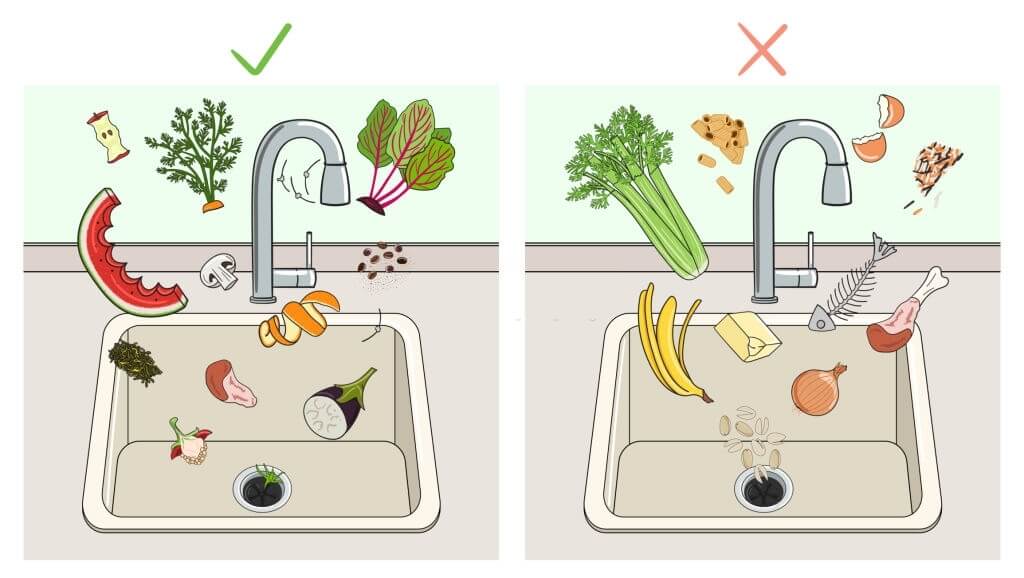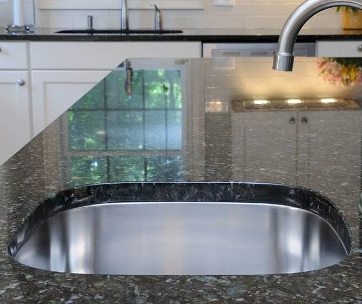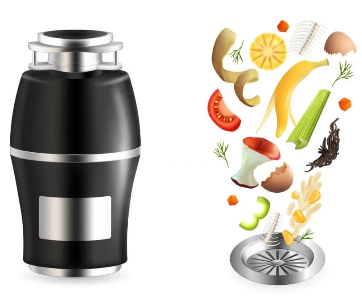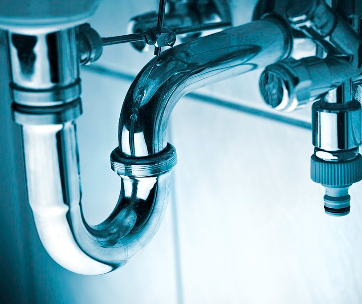Let's face it. Garbage disposal is one of the most mistreated and mishandled kitchen appliances today. A garbage disposal system is more often than not taken for granted through poor handling and maintenance. This often leads to the disposal breaking down, clogging the drain, and causing an endless list of plumbing issues.
But despite all this, it is hard to imagine how vital garbage disposal is to most homeowners. However, dare I say that many homeowners are unaware of how a garbage disposal works. For most, it is common to take a garbage disposal unit to be some blender or grinder that chops every kind of kitchen garbage at a go. This is further from the truth as we will find out there is more behind the scene to how a garbage disposal works. Even better, we get to learn what garbage disposal is and the inside.
What Is A Garbage Disposal and What its Used For?
The process of getting rid of waste food is always a dirty business. For starters, there are different wet food waste that is messy and smelly. Luckily enough, garbage disposals come in handy handling food disposal for the primary home user. This magic device, often located on the underside of your kitchen sink, appears as a small electrical unit with a motor that you can hardwire or plug into a 120-volt box. Inside, the garbage disposal comes with components that help chew up the food scraps fed down into tiny pieces that are efficiently managed.
Once the food waste is macerated, the water flow will help the waste piece flow into a septic tank or to a waste treatment plant. But despite the capability to chop and grind food scraps, the garbage disposal is not a straight magic device that can gobble up all kinds of waste. In particular, garbage disposals can not make all food waste disappear as the design only allows handling specific food waste.
How A Garbage Disposal Works.
While most homeowners take the garbage disposal as a simple grinder, the modern kitchen appliance is way more than that. Inside the garbage disposal are many components working in tandem to shred the food waste and liquefy them. At the top, the garbage disposal features several parts both on the outside and the inside. The disposal unit is often either a metal or plastic canister housing a motor and several grinding components.
The garbage disposal consists of two parts: the upper hopper chamber and the lower hopper chamber for beginners. The insulated motor comes at the bottom with an underneath unit with a reset button featuring different garbage disposal models. Inside the hopper chamber are the grinding components, with the compartment having the flywheel(spinning metal plate) at the base. This flywheel is attached to the motor for the spinning to take place. The average spinning speeds vary, but 1,790 rpm is a good measure for a good garbage disposal unit.
Two impellers(metal teeth) spin independently on top of the flywheel to enable the grinding process. Once the disposal is on, these impellers combine with the flywheel to push the food waste down to the shredder ring. This shredder or grinding ring then pulverizes all the food waste inside the chamber into small bits that can flow easily. Water from your kitchen faucet then washes down the food waste pieces down into the lower hopper chamber. The wastewater flows out through the waste line connector or drainpipe into the sewer system.
You also find out that the underside of the garbage disposal gives you the chance to operate the whole unit. A major operation is mainly done by the motor reset button found underneath the disposal appliance. As the name suggests, this button comes in handy when you need to restart your disposal unit back to its original settings. The breaker switch is also the unit's go-to feature whenever an electrical fault or the motor is overheating.
Things You Should Never Put down Your Garbage Disposal.

Still, we tend to mistake putting certain food items that we shouldn't down the garbage disposal. Among these food waste to avoid with your garbage disposal include
Glutinous Foods
A good chunk of the food waste becomes glutinous once they contact water inside the garbage disposal. The result is the glutinous food waste will gunk up and cause a blockage inside the garbage disposal. Count also that such food materials cant be chopped up by the garbage disposal blades as they will only stick and choke up the components. The glutinous foods to avoid feeding down your disposal are rice, oats, bread, and pasta.
Large Bones
The garbage disposal is not suited to chop or break up large bones from meat waste, even with sharp blades. Once fed down the garbage disposal, the large or thick bones end up resisting the unit's centrifugal pounding action. That jams up your whole garbage disposal unit, and you will need to manually remove the large bones by hand from the grinding chamber. Take note before removing the large bones, disconnect the garbage disposal from the power source.
Large Fruit Pits
Large fruit pits are also a common culprit to gunking up your garbage disposal system. Pits from avocados, peaches, plums, and apricots cant be broken down into small bits to be flushed through the pipes. While the garbage disposal blades are large, these stone fruit pits won't break easily. They will keep jumping inside the unit till you manually remove them. An easy solution is to plant them or have them go in the trash.
Coffee Grounds
There is no cause of alarm for dumping a few coffee grounds down the garbage disposal. However, feeding the unit a lot will clog up the garbage disposal and your whole kitchen plumbing. Bear in mind that plenty of coffee grounds clump together and form a huge mass that cant be chopped or moved out.
Hot Water
Hot water can quickly react with food waste already fed down the garbage disposal system and cause potential damage. For instance, grinding food waste with fat and grease will have the hot water liquefy the residual oils and fats. In the end, the water also spreads the fat and grease out the system covering the garbage disposal components with a thin layer. That could slow down different parts or the complete garbage disposal at once.
Cooking Oil
After a cooking session, there is always the temptation to pour the excess cooking oil down the kitchen drain. But this is a straight-up action in killing your garbage disposal system. The cooking oil you use efficiently clogs up the kitchen disposal unit by forming a thick sticky gel covering the system's interior. This especially goes for all kinds of vegetable, canola, or olive cooking oils.
Grease and Animal Fats
Alongside cooking oils, grease and animal fats react similarly to clog up your garbage disposal. First, feeding the kitchen disposal with fat and grease from cooked meat is wrong, even if they are solid. The shredding turns them into a gel-like liquid that turns into a white-sticky paste if hardened. This white paste is slow-moving, and the drain pipes cannot eliminate it, creating a clog.
Shells
Shells of all kinds, including egg, oyster, or clamshells, can damage your garbage disposal unit once inside. Remember, these shells are too hard to even for the kitchen disposal's blades to break down. Shells are among the most problematic food items, and most kitchen disposal manufacturers emphasize how easy shells damage these appliances.
Peanut Butter
Since the peanut butter is sticky, you can count on it resisting passing through your garbage disposal unit. Not forgetting, the peanut butter is also oily, so once it comes into contact with water, the grinder becomes a messy sight. So, avoid pouring peanut butter down your garbage disposal.
Stringy Vegetables
Excessively fibrous vegetables or fruits are also a big no-no when it comes to working with your kitchen garbage disposal unit. For starters, these vegetables and fruits are fibrous, and their chopped strings get caught inside the garbage disposal's components. This especially clogs up the chopping or grinding mechanism where the blades get clogged with strings. The vegetables and fruits with excess fibers include string beans, celery, banana peels, artichokes, corn husks, cabbage, and rhubarb.
Potato peels
Potato peels are bad news for any kitchen garbage disposal unit. The peels are full of starch, forming a thick sticky paste once broken down and added to water. This messy paste then coats the appliance's blades and other internal components clogging up the whole garbage disposal unit. You should thus avoid dumping potato peels if you want your disposal unit to last.
Bleach
Bleach is often overlooked as a culprit in damaging your kitchen garbage disposal unit. For starters, bleach, like other harsh cleaning products, damages the internal components of any garbage disposal system. However, you can avoid this by using natural cleaners for cleaning and avoiding causing internal damage.
Things You Should Put down Your Garbage Disposal.
There are also food items that come in handy when making sure your garbage disposal is running in top condition. Some of these items help the grinding process, while others assist the disposal system to be clean and fresh. Here are some of the right things to feed down your kitchen garbage disposal
Cold water
Cold water is essential if you aim to have your disposal unit running smoothly. The cold water is beneficial during grinding since it maintains its original form's residual fats and grease. The grinding process is easy with the fats in solid form, and the waste can flow down the drain.
Dish soap
A few squirts of dish soap help get rid of stuck food waste on the disposal and drain pipes lining. Once you dump the dish soap inside, be sure to dump cold water to help with the cleanup and leave that fresh scent.
Citrus fruits rinds
For a fresh scent, you could also try the classic lime or lemon rinds to work in neutralizing those nasty smells. Garbage disposal manufacturers recommend this method as one of the safest ways to get rid of your unit smelling bad.
Ice cubes
Ice cubes also help clean your garbage disposal chamber through a mechanism using scouring action. In essence, the ice cubes act as hard materials which scrub the garbage disposal's lining and remove any stuck food waste inside the chamber. While tiny ice particles will remain, this should not be a cause of concern since they will melt away.
Degreaser
A degreaser is an essential cleaning product that should be used regularly or when necessary. The degreaser is helpful in cleaning and scrubbing dirt, grease, and fats from the disposal unit's grinding chamber and components.
Conclusion
Once you learn the intricacies of garbage disposal and how it works, you realize the importance of this magical kitchen appliance. And with waste disposal becoming more and more hectic, at least we can count on kitchen garbage disposal units to get the job done. Just be sure you treat your disposal kindly and not shove anything down its drain.






